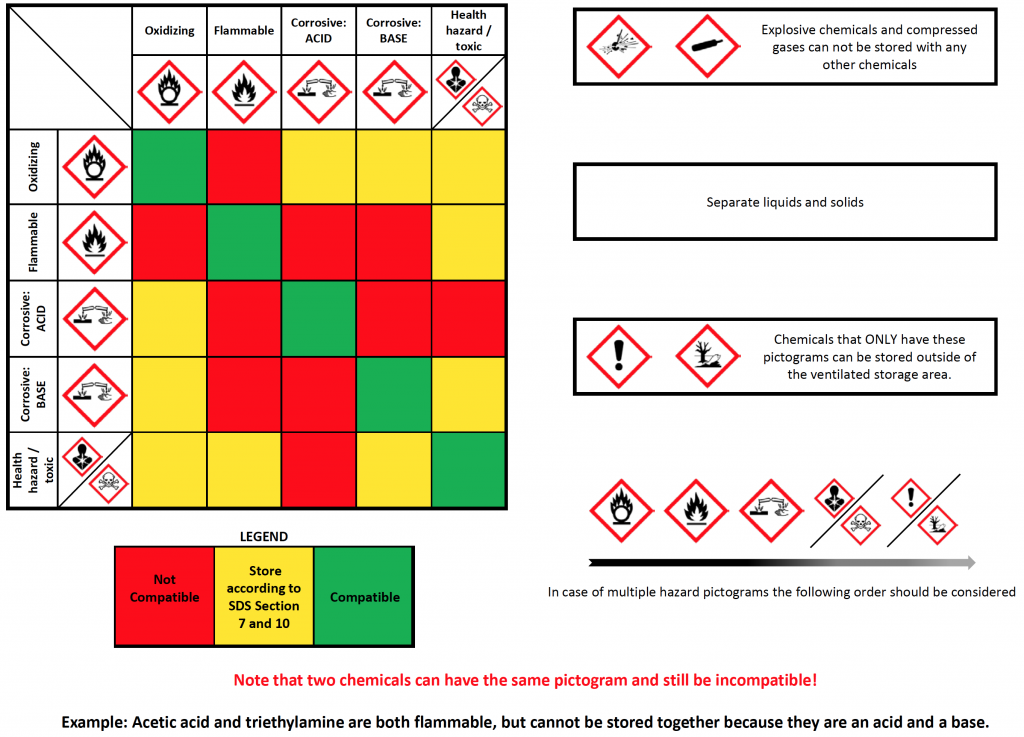Correct storage of chemicals can prevent reactions between incompatible products/materials, which can damage our health, cause fires or even explosions.
The storage of chemicals must be done by sorting products according to their hazard classes in accordance with the GHS pictograms in order to:
- Minimize exposure
- Reduce the risk of fire and explosions
- Provide effective management of chemicals and to compartmentalize and signal high risk areas
- Prevent accidental mixing of chemicals
- Comply with Swiss and international regulations
- Separate liquid from solid chemicals.
- Organize your storage according to the GHS pictograms: check the Hazardous chemicals storage workflow (see Useful documents below).
- Respect the incompatibilities: check SDS section 7 and 10 and compare with the chemical incompatibilities table below.
- Check chemical stock regularly and eliminate products that are too old (over 5 years) or no longer in use.
- Keep an up-to-date inventory of your chemical products.

- Limit the quantity of your products
- Don’t store your products in alphabetical order
- Use retention trays for liquids. The retention tray must be able to hold 100% of the volume of the largest container stored in it
- The maximum volume of a breakable container (e.g. glass) is 3 liters
- The maximum volume of an unbreakable container (e.g. plastic or metal) is 5 liters.
- If possible, keep products in their original containers
- Keep containers upright and do not stack them
- If possible, do not store liquids above eye level
- Avoid direct exposure to sunlight and heat
- Flammable products that need to be kept cold, must be stored in EX-certified fridges or freezers
- Physically separate acids and bases, as well as flammables and oxidizers
- It is forbidden to store chemicals in cold rooms, as they are not ventilated
- After each use or at the end of the day, products must be returned to their storage location
- All storage locations (cupboards, fridges, freezers) must have a location label and the hazard warning sign(s) (yellow/black triangle) corresponding to the products stored.

The labels must always be legible and must be exchanged when necessary.
- Commercial products
Commercial products are labelled with a barcode as soon as they arrive at the chemical store. This barcode is used for chemical inventory purposes.
- Your mixtures, synthesized products and samples
All mixtures, products or samples you may synthesize also need a label.
The label must contain the following information:
- The name of the product
- Your name
- The date of preparation
- The solvent
- The corresponding hazard pictograms, if classified by GHS
Don’t use acronyms, write full name to avoid confusion.
For multiple samples of the same ‘type’, use storage boxes or bins and label them.
Preprinted labels are available in the shop.
The chemical storage online training provides the basic storage rules and EPFL guidelines, and gives you some tips on how to best organise the storage of your chemicals.